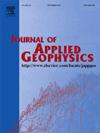Enhanced water saturation evaluation method using an improved electrical efficiency model: A case study of the Mishrif Formation, Iraq
IF 2.2
3区 地球科学
Q2 GEOSCIENCES, MULTIDISCIPLINARY
引用次数: 0
Abstract
The accurate prediction of water saturation in reservoir exploration and development remains a significant challenge, particularly in regions like the Middle East with complex carbonate formations such as the Mishrif Formation. While geophysical logging data is widely utilized for this purpose, however, the complex pore structures render Archie's formula unsuitable, leading to non-Archie phenomenon in rock-electrical experiments. Although the electrical efficiency model has been employed in calculating water saturation in carbonate reservoirs, there has been no prior study incorporating electrical porosity for its refinement. This study enhances the conventional electrical efficiency model by introducing the concept of electrical porosity. The improvement aims to mitigate the impact of isolated mold pores and sparse regions of current density distribution on electrical efficiency, focusing on the Mishrif Formation and quantitatively computing water saturation. Initially, the study area is categorized into three distinct rock-physics types of reservoirs using the Winland R35 method, with respective electrical porosities calculated. Subsequently, these results are integrated with the enhanced electrical efficiency model, and trial calculations are performed using geophysical well-logging data, followed by a comparison with core data. The findings reveal that the improved electrical efficiency model yields an average relative error of only 10.36 % compared to core data, whereas the respective errors for Archie's formula and traditional electrical efficiency models are 17.65 % and 20.92 %, indicating enhanced accuracy with the improved approach. Across different reservoir types, a decrease in electrical porosity proportion is observed with diminishing pore-throat radius. Additionally, the consistency of this trend is validated by nuclear magnetic resonance logging data. Lastly, the necessity of reservoir rock-physics type classification for electrical porosity computation is confirmed. For heterogeneous reservoirs, direct calculation of electrical porosity is infeasible, thus underscoring the essential groundwork of reservoir rock-physics type delineation. This study improves water saturation prediction accuracy and applicability by introducing electrical porosity to refine the conventional electrical efficiency model, holding significant implications for the exploration and development of complex reservoirs.
利用改进的电效率模型提高含水饱和度评价方法:以伊拉克Mishrif地层为例
在油藏勘探和开发中,准确预测含水饱和度仍然是一个重大挑战,特别是在中东地区,如Mishrif组等复杂的碳酸盐岩地层。然而,由于复杂的孔隙结构使得阿尔奇公式不适用,导致岩电实验中出现了非阿尔奇现象。尽管电效率模型已被用于计算碳酸盐岩储层的含水饱和度,但目前还没有研究将电孔隙度纳入其中以进行改进。本研究通过引入电孔隙度的概念,对传统的电效率模型进行了改进。改进的目的是减轻孤立的霉菌孔隙和电流密度分布的稀疏区域对电效率的影响,重点关注Mishrif地层和定量计算含水饱和度。首先,使用Winland R35方法将研究区划分为三种不同的岩石物理类型的储层,并计算了各自的电性孔隙度。随后,将这些结果与增强的电效率模型相结合,并使用地球物理测井数据进行试算,然后与岩心数据进行比较。结果表明,改进后的电效率模型与核心数据的平均相对误差仅为10.36%,而阿奇公式和传统电效率模型的平均相对误差分别为17.65%和20.92%,表明改进后的方法提高了精度。在不同的储层类型中,电性孔隙度比例随着孔喉半径的减小而减小。通过核磁共振测井资料验证了这一趋势的一致性。最后,论证了储层岩石物理类型分类对电性孔隙度计算的必要性。对于非均质储层,电性孔隙度的直接计算是不可行的,从而强调了储层岩石物理类型圈定的基础。该研究通过引入电性孔隙度对常规电效率模型进行改进,提高了含水饱和度预测的准确性和适用性,对复杂储层的勘探开发具有重要意义。
本文章由计算机程序翻译,如有差异,请以英文原文为准。
求助全文
约1分钟内获得全文
求助全文
来源期刊

Journal of Applied Geophysics
地学-地球科学综合
CiteScore
3.60
自引率
10.00%
发文量
274
审稿时长
4 months
期刊介绍:
The Journal of Applied Geophysics with its key objective of responding to pertinent and timely needs, places particular emphasis on methodological developments and innovative applications of geophysical techniques for addressing environmental, engineering, and hydrological problems. Related topical research in exploration geophysics and in soil and rock physics is also covered by the Journal of Applied Geophysics.
 求助内容:
求助内容: 应助结果提醒方式:
应助结果提醒方式:


